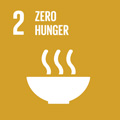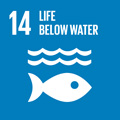- Docente: Luca Parma
- Credits: 6
- SSD: AGR/19
- Language: Italian
- Teaching Mode: In-person learning (entirely or partially)
- Campus: Cesena
- Corso: First cycle degree programme (L) in Aquaculture and Fish Production Hygiene (cod. 8834)
-
from Sep 15, 2025 to Dec 11, 2025
Learning outcomes
The course aims to contribute to the student’s education by providing knowledge on the quality aspects of fishery and aquaculture products, including key insights into their suitability for various processing technologies. With regard to aquatic food products, the course addresses the evaluation of commercial, nutritional, dietary, sensory, technological, and freshness quality.
By the end of the course, students will have acquired the ability to assess the different quality attributes of seafood both instrumentally and sensorially with respect to direct consumption and/or processing. Moreover, they will be able to critically and accurately interpret the wide range of information available in the scientific literature on the topics covered.
Course contents
This Course is part of the Integrated Course:
SENSES AND INSTRUMENTS FOR THE QUALITY OF FISHERY PRODUCTS
SPECIFIC COURSE CONTENTS
This course offers an integrated overview of the various aspects that contribute to defining the quality of fishery products, with reference to fish, mollusks, and crustaceans from both wild fisheries and aquaculture. The course is structured around five main thematic areas: commercial quality, nutritional quality, technological quality, sensory quality, and freshness quality. Each area provides both theoretical and practical tools for a comprehensive assessment of product quality throughout the seafood supply chain.
Commercial Quality (8 hours)
This introductory section describes the main processing procedures and yields for the most commercially relevant aquatic species. Differences between farmed and wild-caught products will be analyzed, with attention to variability based on species, size, and processing method. Special focus will be given to the use of national and international reference databases for species identification and their commercial characteristics.
Nutritional and Dietary Quality (12 hours)
This section delves into the nutritional value of seafood, based on the updated LARN (Recommended Daily Allowances of Energy and Nutrients), useful for understanding how and to what extent fish, mollusks, and crustaceans contribute to meeting human nutritional needs.
Key topics include:
-
The main macro- and micronutrient composition of aquatic products
-
Their placement within different food pyramid models
-
The concept of nutrient density
-
Nutritional labelling guidelines (e.g., GDA)
-
Changes in nutritional content due to different cooking techniques (true and apparent nutrient retention)
-
The use and interpretation of food composition tables, with practical examples
Technological Quality (10 hours)
This section focuses on the technological properties of seafood matrices and their behavior during processing. Tools and methods for measuring key parameters will be introduced, including:
-
Water holding capacity (WHC)
-
Color
-
Texture/firmness
The goal is to develop skills in using instrumental technologies to support and complement sensory analysis in the assessment of technological suitability.
Freshness Quality (10 hours)
Freshness is one of the most critical parameters in determining seafood quality.
This part of the course explores the post-mortem changes occurring in fish, mollusks, and crustaceans, including biochemical, enzymatic, and microbiological processes.
Students will learn about the main methods for evaluating freshness, including:
-
Chemical methods
-
Physical methods
-
Sensory methods
Particular attention will be given to the Quality Index Method (QIM), with practical examples, advantages, limitations, and critical review of species-specific evaluation schemes.
Sensory Quality (20 hours)
This is the most extensive section of the course and is dedicated to sensory analysis as a scientific tool for assessing the organoleptic quality of fishery products.
The section begins with the fundamentals of sensory evaluation and an overview of sensory physiology.
Topics covered include:
-
Criteria for recruiting and training panelists, based on normal sensory sensitivity tests
-
The main discrimination tests, such as the triangle test, with examples from the literature
-
Descriptive sensory analysis methods and related challenges
-
The most common errors in sensory evaluation and how to prevent them
-
Concepts of consumer science, including hedonic testing and data management
Finally, students will explore practical applications of sensory analysis on seafood, with specific focus on color, odor, texture, and flavor, both in raw and cooked products.
Readings/Bibliography
The teaching material for this course is available on the Virtuale platform (https://virtuale.unibo.it/ ).
Teaching methods
The course consists of lectures and practical sessions/laboratory work.Wearing a lab coat and appropriate footwear is mandatory during practical and laboratory activities.
Personal protective equipment (PPE) required for specific tasks, such as disposable latex gloves, will be provided.
Assessment methods
The exam consists of an individual oral interview lasting approximately 20 minutes. The final grade is communicated at the end of the interview. The exam is considered passed with a minimum score of 18 out of 30.
The results of each exam component and the final grade will be published on the Virtuale platform (https://virtuale.unibo.it ) within five working days from the completion of the last module.
Students have the right to reject the grade by notifying the official examiner by email within five working days of publication.
The official examiner for the integrated course is Prof. Luca Parma.
Students can register for exam sessions via the AlmaEsami platform (http://almaesami.unibo.it ). Exam dates are scheduled within the timeframes established by the academic calendar. Additional sessions are reserved for students who are behind schedule with their studies.
Students with Specific Learning Disorders (SLD) or disabilities, whether temporary or permanent, are advised to contact the University’s dedicated office well in advance:
https://site.unibo.it/studenti-con-disabilita-e-dsa/en/for-students
The office will propose any necessary accommodations, which must be submitted to the course instructor for approval at least 15 days before the exam date. The instructor will assess the suitability of the accommodations based on the learning objectives of the course.
Teaching tools
PowerPoint presentations, videos, dedicated software, in-class quizzes.
In case of difficulties in understanding the subject, the Professor is available to meet with the student for clarification, upon appointment via email.
Office hours
See the website of Luca Parma
SDGs



This teaching activity contributes to the achievement of the Sustainable Development Goals of the UN 2030 Agenda.
